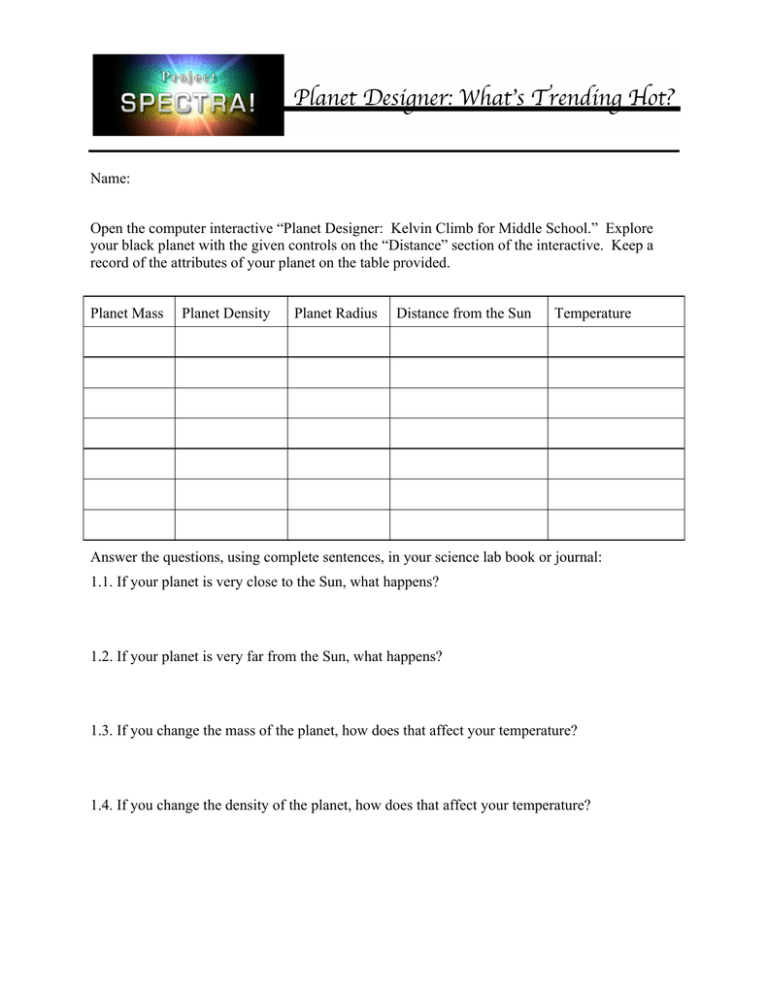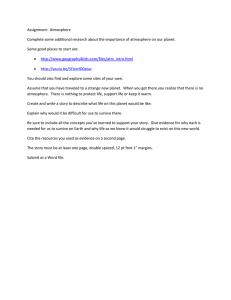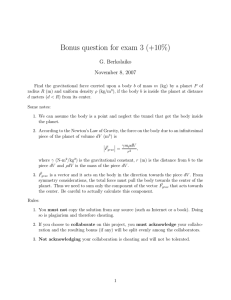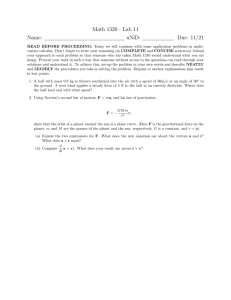Name: Open the computer interactive “Planet Designer: Kelvin Climb for... your black planet with the given controls on the “Distance”...
advertisement

Name: Open the computer interactive “Planet Designer: Kelvin Climb for Middle School.” Explore your black planet with the given controls on the “Distance” section of the interactive. Keep a record of the attributes of your planet on the table provided. Planet Mass Planet Density Planet Radius Distance from the Sun Temperature Answer the questions, using complete sentences, in your science lab book or journal: 1.1. If your planet is very close to the Sun, what happens? 1.2. If your planet is very far from the Sun, what happens? 1.3. If you change the mass of the planet, how does that affect your temperature? 1.4. If you change the density of the planet, how does that affect your temperature? Part 2 Real planets have regions of light and dark, which contribute to the temperature by reflecting or absorbing sunlight. The amount of light a planet reflects is called albedo. Set a planetary mass, density, and distance in the computer interactive, and then click the “Next” button to enter the “Albedo” section. Explore the effects of albedo on the temperature of the planet by painting your planet using the controls provided. What happens when your planet is all black, all white, or different solid colors? Record your findings in the table below. DISTANCE FROM THE SUN: Albedo Description of color Temperature 1 0 Answer the questions, using complete sentences, in your science lab book or journal: 2.1. If a planet has a value of albedo that is very close to one, would you expect that planet to be light or dark? 2.2. If a planet has a value of albedo that is very close to zero, would you expect that planet to be light or dark? 2.3. Describe in your own words how albedo affects a planet’s temperature. (Hint: How is the temperature different for an all white planet versus an all black planet?) Part 3 Paint your planet in any way you choose before clicking “Next” to enter the “Atmosphere” section of the interactive. In this section you will add an atmosphere to your planet by changing the atmospheric thickness and greenhouse strength. Try to create a planet that could have liquid water on the surface. Record your findings in the table below: Description of Atmosphere Thickness (Thin, Moderate, etc.) Greenhouse Strength (Weak, Moderate, etc.) Surface Temperature (Celsius) Description of the planet’s surface (include whether your planet could have liquid water or ice) 3.1. Once you have settled on your atmospheric thickness and greenhouse strength, click the “Next” button to review your planetary characteristics. On a separate page, draw a picture of your planet with labels describing the atmosphere, greenhouse strength, temperature, distance from the Sun, and surface features. Share the drawing with the class.








